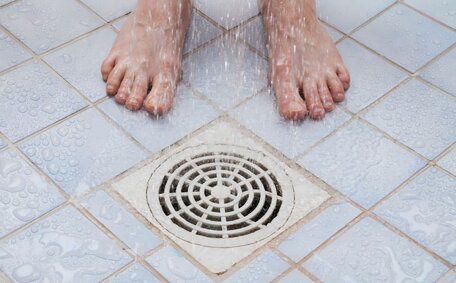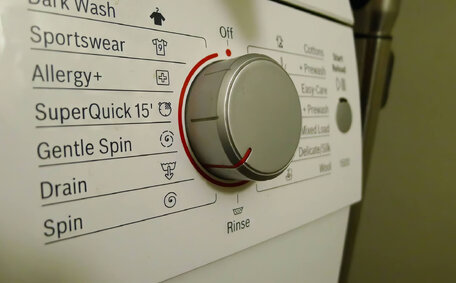
Baking Soda & Vinegar for Cleaning
Using baking soda & vinegar separately for cleaning is very effective; but mixing them dilutes their cleaning power. Learn how to use them properly.
Read MoreGas heaters provide comfort, yet safety is paramount. Heaters designed for indoor use are engineered to reduce risks like carbon monoxide emissions, which LPG heaters, unsuitable for indoor use, do not address.
Australian standards regulate gas heater emissions to limit harmful gases like carbon monoxide and nitrogen dioxide, ensuring safer operation. Incorrect operation, especially with propane heaters, can cause health hazards like carbon monoxide poisoning, which is undetectable due to its odourless and colourless properties. Using a defective gas heater or improperly operating propane heaters indoors can elevate risks, compromising safe home heating.
For optimal safety and efficiency, adhere to these guidelines:
Following manufacturer guidelines and ensuring professional installation and servicing of your gas heater will minimise risks, allowing safe and worry-free warmth. But ultimately, proper cautious operation by occupants is essential.
Consider gas heaters with indoor-specific safety features designed to prevent the accumulation of harmful gases such as carbon monoxide.
look for the following safety features when selecting an indoor heater, including flueless gas technology:
Ensure that any unflued gas heaters for indoor use are certified under energy safety standards, bearing in mind that requirements vary with different safety features. Approved models should have an energy rating label and safety compliance mark.
Using outdoor gas heaters indoors, like patio heaters, due to their lack of protective features compared to electric heaters, renders them considerably less secure.
Have it serviced at least once every 2 years to ensure it does not emit harmful emissions like dioxide carbon.
Routine upkeep and having your gas heater serviced helps pinpoint and rectify concerns promptly before they result in carbon monoxide poisoning. Regular maintenance ensures that components function correctly, leaks are absent, safety features are active, and emissions are within safe limits.
Heaters, particularly those over 10 years old, require annual servicing to check for carbon monoxide (CO) emissions. As components age and wear over time, yearly inspections mitigate associated risks.
Neglecting maintenance can jeopardise health, with carbon monoxide exposure potentially leading to conditions such as childhood asthma. Time and ongoing use contributes to wear and tear or build up of dust, debris and spider webs. Small issues if left can turn into major problems or result in failure of important safety systems.
Seeking a licensed technician for heating system servicing is cost-effective and convenient. Addressing minor issues promptly ensures safe, long-term operation of your indoor gas heater. Investing modestly today can forestall potential concerns in the long run, ensuring continued safe use.
Lilyfield Plumbing provides guidance on professional gas heater servicing in accordance with Australian Standards. Get in touch or book online to organise an inspection from our qualified gas specialists.
For safe use, learn how to operate your heater correctly and comply with the manufacturer’s guidelines, which apply to both indoor and outdoor gas appliances. Here are some key steps for gas cooking and heating safety:
For further tips or advice on safely operating your indoor heating appliance, Lilyfield Plumbing’s qualified specialists are always happy to help. Contact us or call 1300 349 338.
Adequate ventilation is key when using natural gas heaters indoors to curb the potential build-up of air pollutants like carbon monoxide. Natural gas heaters use up oxygen when running; ventilation requirements might differ by location. Without adequate air circulation, oxygen levels can fall dangerously low, leading to poor indoor air quality and potential pollution.
To effectively use unflued gas heaters, consider these ventilation tips:
Carbon monoxide alarms are crucial because this gas is invisible and odourless. Install alarms as an extra preventative measure, but proper ventilation remains most critical.
If you ever smell gas while the heater is operating, switch it off immediately and call a professional to inspect, which is the best action you can do in such cases. This could indicate that carbon monoxide can be present, hinting at a leak or a dangerous buildup due to inadequate ventilation.
Lilyfield Plumbing are specialists when it comes to keeping gas heaters safe. Contact us or call 1300 349 338 for tips on providing sufficient ventilation for your indoor gas heater.
Exposure to high levels carbon monoxide in the air, which is odourless and colourless, can induce flu-like symptoms. Look out for these warning signs that your gas heater may be leaking carbon monoxide:
If anyone experiences these symptoms while the gas heater is operating, take action immediately:
Since you can’t see or smell carbon monoxide, its silent presence is particularly deceptive, illustrating why alarms are essential as carbon monoxide can’t be detected by smell or sight. Lilyfield Plumbing can provide and fit quality carbon monoxide alarms to safeguard your home.
For gas heater servicing or to inquire about carbon monoxide alarms, contact our team on 1300 349 338 or request a booking online.
Choose a certified gas heater with built-in safety features suitable for indoor use.
Look for the safety compliance mark showing the heater meets the Australian Standard (AS) for gas heaters, including those for openflued gas models. Ensure the selected heater is compatible with your gas type and includes features such as:
visually inspect the heater before each winter season. Check components are intact with no signs of wear or corrosion. Ensure vents and gas valves are clear from blockages and buildup.
For assistance selecting or installing a certified indoor type of gas heater with safety functions, Lilyfield Plumbing’s licenced specialists are happy to help. Email us, request an appointment or call 1300 349 338.
Using baking soda & vinegar separately for cleaning is very effective; but mixing them dilutes their cleaning power. Learn how to use them properly.
Read MoreBlocked drains are usually caused by buildup of hair, grease, debris and more in your pipes. Fix the problem with professional drain unblocking services to get your drains flowing freely again. Contact us for affordable drain unblocking.
Read MoreWhen you suspect a gas leak or damaged gas line, contact a licensed gas fitter immediately to locate and repair it. A gas line repair involves sealing leaks, replacing corroded or damaged pipes and testing all connections for safety before restoring gas supply.
Read MoreLilyfield, 2040 NSW
We will call back as soon as possible.




